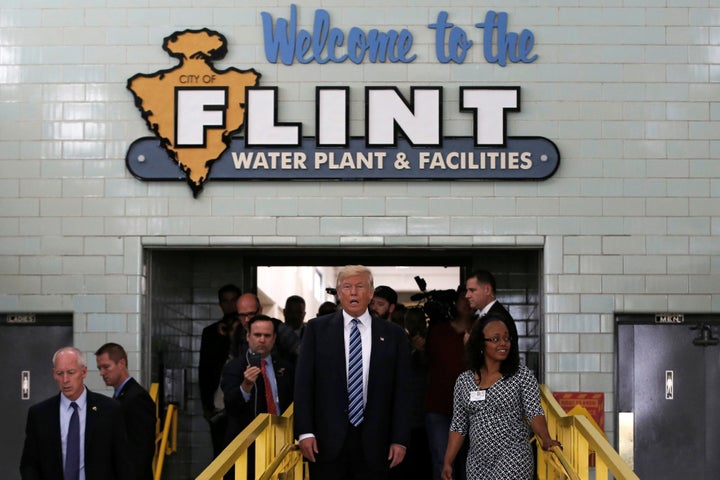
It is becoming increasingly clear that many of the conditions that contributed to the ongoing water crisis in Flint, Michigan, are also present in thousands of communities throughout the United States.
A new Reuters analysis of lead testing results across the U.S. published this week found nearly 3,000 communities with poisoning rates that were actually double those of Flint at the height of its contamination crisis.
Lead poisoning is not solely attributable to water, of course — paint and industrial waste are other sources — but the nation’s rapidly deteriorating water infrastructure and a lack of proper testing and oversight of water systems aren’t helping matters.
A separate investigation by USA Today released earlier this month similarly found that 4 million Americans living in small, rural communities were drinking water that might be contaminated with lead due to testing that their utilities either skipped or did not carry out adequately.
The Environmental Protection Agency, which has been widely criticized for playing a significant role in the Flint crisis, appears to be aware of the ways in which it has not lived up to its duty of enforcing both the Clean Water Act and Safe Drinking Water Act, which are intended to protect the nation’s water.
Late last month, the EPA issued a comprehensive “action plan” on its drinking water policies. The report lays out extensive plans to build capacity for water infrastructure improvements, to improve oversight of the Safe Drinking Water Act and to reduce the risk of lead exposure.
Environmentalists and safe water advocates like Harry Henderson, director of the Natural Resources Defense Council, were encouraged by the plan.
“This is an example of the EPA doing what it needs to do, taking a strong national leadership position in framing how we move forward,” Henderson told HuffPost. “And that needs to be understood by whoever sits in the chair of administrator of the EPA.”
President-elect Donald Trump’s selection for that position, Oklahoma Attorney General Scott Pruitt, has made Henderson skeptical about whether the agency under his leadership, if he is confirmed, will take action on key components of the plan.
One priority area of the plan centers on strengthening the protection of the source waters of drinking water. Pruitt has been one of the most vocal opponents to one of the agency’s efforts to accomplish just that, the “waters of the U.S.” Clean Water Rule.
Last year, Pruitt sued the EPA on the matter of the rule, which is intended to clarify which waterways are legally protected under the Clean Water Act, just one of several times he has sued the agency he may soon lead.
Such an action runs contrary to what Henderson described as a clear need for “an effective cop on the beat” to address the nation’s drinking water challenges.
Henderson fears a failure to take such an approach at the federal level rather than leaving such matters in states’ hands — as Pruitt has advocated for in his EPA lawsuits — would likely result in further water crises.
“In Flint, we see what happens when a passive EPA ‘leaves things to the states,’” Henderson said. “Mr. Pruitt’s suggestion of increased deference to states as opposed to understanding the critical intersection of federal standards and oversight to ensure the enforcement of the law is a recipe for continued decline and disaster.”
The real impact the EPA’s plan may have is also in question given Trump’s repeated threats to dismantle the agency. If the EPA’s funding is reduced, it will likely not be able to carry out much, if any, of the plans it contains.
If Henderson sees some hope in the new administration’s water policy plans, it may lie in Trump’s call for the nation to improve its infrastructure.
The president-elect spoke often of his support for “crystal clear, crystal clean” water prior to the election, and his campaign website features a call to triple funding for state revolving loan fund programs that support states’ and municipalities’ efforts to upgrade their water systems.
And while such an investment in water infrastructure could make a huge impact on water utilities, the proof, Henderson noted, remains in the pudding.
“We have this opportunity now but we have to get it right,” he added. “There are ways in which large-scale public works projects can get it right and ways in which they can exacerbate significant declines. It’s all in the details.”
―-
Joseph Erbentraut covers promising innovations and challenges in the areas of food and water. In addition, Erbentraut explores the evolving ways Americans are identifying and defining themselves. Follow Erbentraut on Twitter at @robojojo. Tips? Email joseph.erbentraut@huffingtonpost.com.

